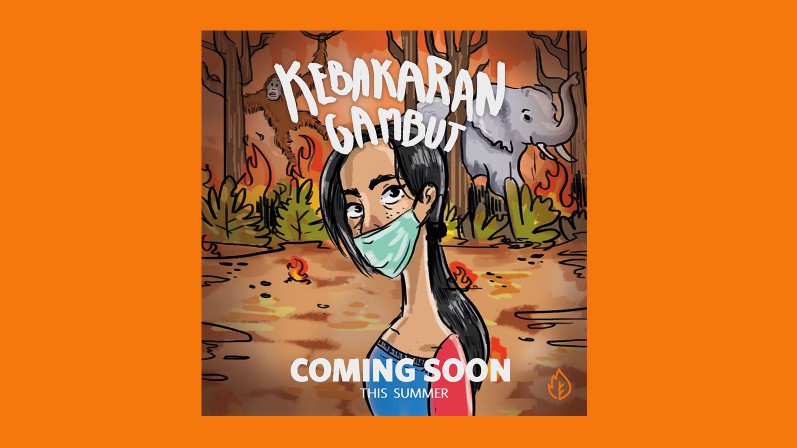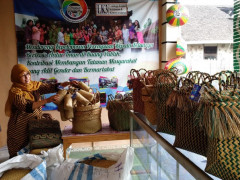Unraveling the Chaos of Peatlands in Jambi
By Feri IrawanNew Year's Bitter Gift – Forest Fires in Riau
While other officials were enjoying New Year's holidays, Edwar, the Head of Riau Regional Disaster Management Agency (BPBD), had to prepare for a new alert. Actually, it's not a new alert, but a repeated one for peatland fires in Riau.
"This is the third day of the fire in Mamugo Village, Tanah Putih Subdistrict, Rokan Hilir. The area is about 15 hectares," said Edwar.
The location of the fire was an open access area which was a former concession of a company whose permit had expired. However, he wasn’t sure how the fire started, whether it was due to human’s doing or unfriendly weather.
A report from the Pekanbaru Meteorology, Climatology and Geophysics Agency (BMKG) on Friday (4/1/2019) stated that there were 7 hotspots in Riau, five of them with a confidence level of above 70%. There were three hotspots Rokan Hilir and two hotspots in Dumai. Both areas have peatlands that often got burned during the dry season.
Based on the weather analysis by Pekanbaru BMKG, the 10-day rainfall in early January was low. Moreover, there was a tropical cyclone in the Gulf of Thailand which affected the weather, especially in Riau.
BMKG had estimated the risk of forest and peat fires earlier this year because Riau is entering the first phase of the annual dry season, which will last until its peak in February. The second dry phase is expected to occur from July to September.
"We have sent a report (to the regional fire management team). We have warned them about the dry season. The dangerous area is on the east coast because of the peatlands, as well as in Pelalawan and Indragiri Hilir," said Aristya Ardhitama, climate analyst at the Pekanbaru BMKG, to Pantau Gambut.
This regional fire management team consists of various agencies, such as the Regional Government, the Regional Disaster Management Agency (BPBD), and the Environment and Forestry Office.
The climate factor will be a formidable challenge for the prevention and management of forest and land fires in Riau, and generally in Indonesia, in 2019. The El Nino phenomenon has started last December and is expected to last until April.
“We will experience the weak to moderate category of El Nino. El Nino has occurred since the end of last year and is expected to last until April 2019. Hopefully, it will not shift to the strong category so the dry season won’t last long. For now, it has not affected the climate in Riau," said Ardhi.
The World Meteorological Organization (WMO) estimated that this year's El Nino effect will not be as big as in 2015-2016. Although the climate in 2019 is not expected to be as dry as in 1997 and 2015, this year's El Nino will still significantly impact the changes in rainfall and temperature in several regions. Moreover, if combined with climate change, the 2019 El Nino will increase global temperatures.
Several parties have begun to prepare for worse events. Late last year, the Indonesian Ministry of Environment and Forestry, began to make the preparation.
"The five-year dry cycle should occur in 2020, but we will experience it a year earlier because there will be El Nino in 2019," said Israr Albar, Head of the Center for Climate Change, Forest and Land Fire Control (BPPIKHL) for Sumatra, some time ago.
Indonesia experienced severe forest and land fires in 2015, in which 2.6 million hectares of land were burned and some people were even killed. At that time, Riau was one of the provinces with an alarming fire situation. The fires in Riau in early 2019 should be an important warning for all parties to prevent the reoccurrence of the 2015 incident.




